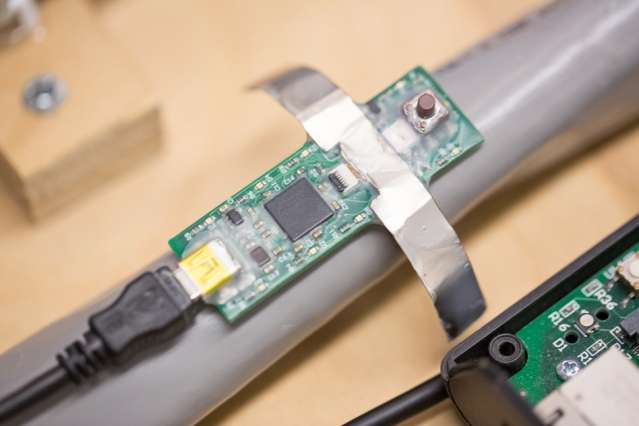
In today’s data-centric, energy-conscious age, seeking to reduce your electricity bill and greenhouse gas emissions is quite common. But if you’re trying to decide which device to switch to an energy-efficient mode, how can you figure out which uses the most energy? Trying to compare products’ energy use labels is often fruitless and overly complex, as those actual figures vary depending on how old a product is and how your local climate fares, among other things. However, thanks to MIT’s research and software, a much easier method for determining how much power each device uses is approaching.
While developing devices to screen electricity use is not new, MIT’s plans of a stamp-sized energy monitor have some ideal advantages. Involving no complicated installation, the process doesn’t require disconnected wires, and you don’t have to be overly careful when placing sensors over an incoming power line. The system is designed as self-calibrating and processes comprehensive information about voltage and current patterns. Such detailed readings allow one to differentiate every kind of light, motor, and device in the home to determine when certain products are used.
MIT’s system is also arranged so that all of this specific information remains within the home and does not run at risk of someone else accessing your power. The research team is also developing customized apps that could provide in-depth analysis of a user’s specific power-related needs. These apps could help the entire system become even more useful, as tests of it have proven successful. Testing has also shown when heating is excessive, as seen with an installation at a military base where large tents were heated during the day despite usually being empty at that time.
“For a long time, the premise has been that if we could get access to better information [about energy use], we would be able to create some significant savings,” said Steven Leeb, MIT professor of Electrical Engineering and one of the research paper’s authors. The required information has grown more attainable as the years go by, firstly needing the skill to supervise changes in voltages and current without disabling main power lines to a home or connecting each appliance to a monitoring device. Systems that previously tried to use wireless sensors for determining faint magnetic and electric fields had dubious performance because fields would cancel out each other. MIT found a solution by applying an array of five offset sensors and a calibration system that determines the strongest sensor signal.
With this sensor system in place, MIT researchers then had to find a way to analyze data flooding in from the sensors. Because every energy appliance has different performing speeds and voltage variances, a database of these differences is key to understanding products. MIT was able to develop such a catalog of appliances’ “signatures,” then having to display the data in a decipherable way. The team created an interface that permits users to “zoom in” on time segments and explore things such as when a fridge turns on and how often a water heater switches on and off.
MIT plans to develop the system commercially, only pricing it at about $25 to $30 per home. As the device is a non-contact sensor, someone could even install it without any outside help. William Singleton, an engineer at the U.S. Army Fort Devens Base Camp Integration Laboratory who wasn’t involved in the experiments, said the system is “an excellent example of how theoretical scientific and mathematical principles can be brought to bear on real world, practical, problem-solving applications. Significant potential savings in fuel, water, and equipment maintenance can be realized.”
Source: TechXplore , New Atlas
Advertisement
Learn more about Electronic Products Magazine





